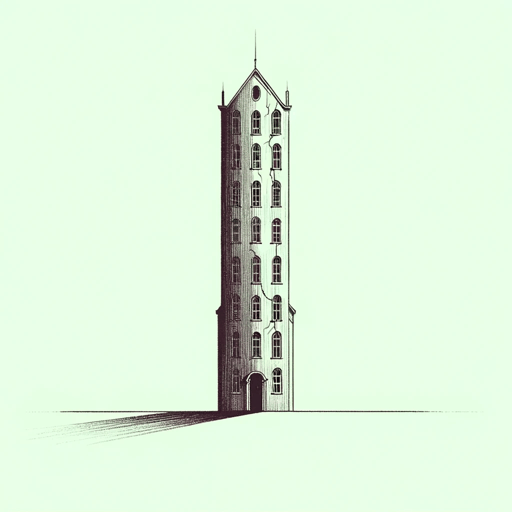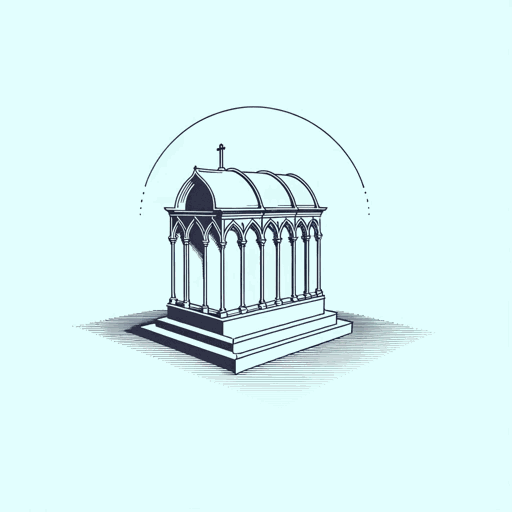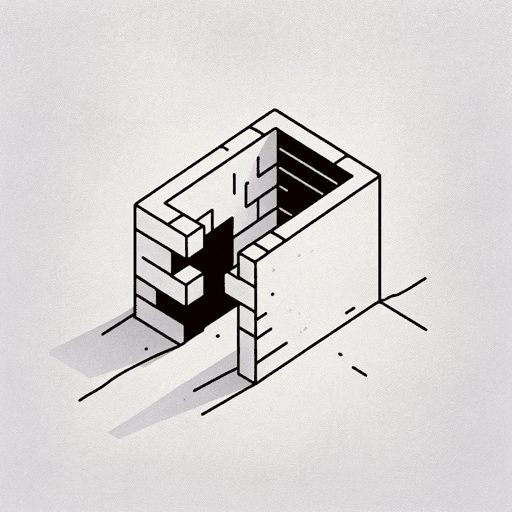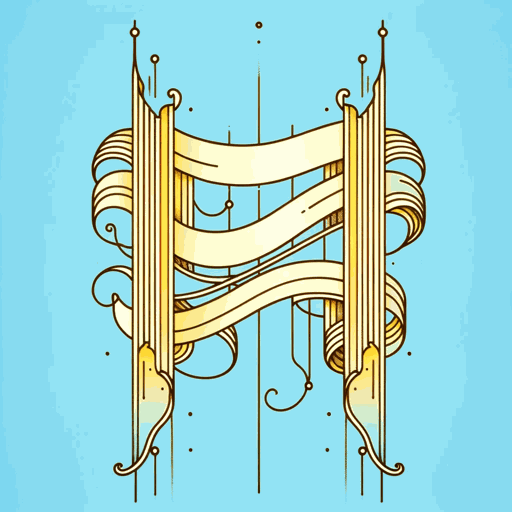

A Summary and Analysis of Edgar Allan Poe’s ‘The Fall of the House of Usher’
‘The Fall of the House of Usher’ is an 1839 short story by Edgar Allan Poe (1809-49), a pioneer of the short story and a writer who arguably unleashed the full psychological potential of the Gothic horror genre. The story concerns the narrator’s visit to a strange mansion owned by his childhood friend, who is behaving increasingly oddly as he and his twin sister dwell within the ‘melancholy’ atmosphere of the house.
‘The Fall of the House of Usher’ has inspired a range of interpretations: it has been analysed as proto-Freudian and proto-Kafkaesque, among many other things. The best way to approach the story is perhaps to consider its plot alongside the accumulation of detail Poe provides. Before we come to an analysis, however, here’s a brief summary of the plot of the story.
‘The Fall of the House of Usher’: plot summary
The story is narrated by a childhood friend of Roderick Usher, the owner of the Usher mansion. This friend is riding to the house, having been summoned by Roderick Usher, having complained in his letter that he is suffering from some illness and expressing a hope that seeing his old friend will lift his spirits.
When he arrives, the narrator finds a gloomy and vaguely menacing atmosphere, and his friend, Usher, is much changed since he last saw him: overly sensitive to every sound and sight, and prone to dramatic mood swings. Meanwhile, Roderick’s twin sister Madeline is afflicted with a disease which, Roderick tells the narrator, means she will soon die. These twins are the last in the family line, the last descendants of the ‘house of Usher’.
Roderick Usher is a gifted poet and artist, whose talents the narrator praises before sharing a poem Usher wrote, titled ‘ The Haunted Palace ’. The ballad concerns a royal palace which was once filled with joy and song, until ‘evil things’ attacked the king’s palace and made it a desolate shadow of what it once was.
Several days later, Roderick tells the narrator that Madeline has died, and they lay her to rest in a vault. In the days that follow, the narrator starts to feel more uneasy in the house, and attributes his nervousness to the gloomy furniture in the room where he sleeps. The narrator begins to suspect that Roderick is harbouring some dark secret.
Roderick grows more erratic in his behaviour, and the narrator reads to his friend to try to soothe him. The plot of the romance (a fictional title invented by Poe himself, called ‘Mad Trist’) concerns a hero named Ethelred who enters the house of a hermit and slays a dragon.
In a shocking development, Madeline breaks out of her coffin and enters the room, and Roderick confesses that he buried her alive. Madeline attacks her brother and kills both him and herself in the struggle, and the narrator flees the house. It is a stormy night, and as he leaves he sees the house fall down, collapsing into the lake which reflects the house’s image.
‘The Fall of the House of Usher’: analysis
‘The Fall of the House of Usher’ is probably Edgar Allan Poe’s most famous story, and in many ways it is a quintessential Gothic horror story. We have a mysterious secret afflicting the house and eating away at its owner, the Gothic ‘castle’ (here, refigured as a mansion), premature burial (about which Poe wrote a whole other story ), the mad owner of the house, and numerous other trappings of the Gothic novel. Poe condenses these into a short story and plays around with them, locating new psychological depths within these features.
How does he play around with them? First, Poe renders them ambiguous rather than clear-cut. Indeed, there are no overtly supernatural elements in ‘The Fall of the House of Usher’: just a general sense of something not being quite right. Many things in the story are, to use a term later popularised by Sigmund Freud, ‘ uncanny ’: simultaneously familiar yet unfamiliar; another key element of the uncanny is the secret which ‘out to have remained secret and hidden but has come to light’.
The secret that is buried and then comes to light (represented by Madeline) is never revealed. The symbol which represents the secret – Madeline herself – is hidden away by Roderick, but that symbol returns, coming to light at the end of the story and (in good Gothic fashion) destroying the family for good.
But Madeline is, if you like, a signifier without a signified: that is, she is a symbol with no code. She represents a secret, but what that secret is (an unseemly relationship between her and her brother, or some dark secret from the family’s past?) does remain hidden. The secret, as it were, remains a secret even when it is ‘revealed’.
Doubling is another aspect of the ‘uncanny’, because seeing our double is both a familiar and a strange experience. This person both is and is not me; this reflection of the house in the lake or ‘tarn’ looks exactly like the house and yet clearly is but an image of the house. And doubling is very important in ‘The Fall of the House of Usher’, as it is in other Poe stories: witness his tale ‘ William Wilson ’, which plays around with this idea of the doppelganger or mysterious double.
And virtually everything seems doubled in ‘The Fall of the House of Usher’: the title itself has a double meaning (where the ‘house’, or family of Usher falls, but the literal bricks-and-mortar structure also collapses), the house is reflected or doubled in the lake, Roderick and Madeline are twins or ‘doubles’ of a sort, and the plot of the ‘Mad Trist’ mirrors or doubles Roderick’s own situation.
‘The Fall of the House of Usher’ can also be analysed as a deeply telling autobiographical portrait, in which Roderick Usher represents, or reflects, Poe himself. After all, Roderick Usher is a poet and artist, well-read (witness the assortment of books which he and the narrator read together), sensitive and indeed overly sensitive (to every sound, taste, sight, touch, and so on). Many critics have interpreted the story as, in part, an autobiographical portrait of Poe himself, although we should be wary, perhaps, of speculating too much about any parallels.
For instance, it has sometimes been suggested that Roderick’s relationship with Madeline echoes Poe’s own relationship with his young wife (who was also his cousin), Virginia, who fell ill, as Madeline has. But Virginia did not fall ill until after Poe had written ‘The Fall of the House of Usher’.
An interpretation which has more potential, then, is the idea that the ‘house of Usher’ is a symbol of the mind, and it is this analysis which has probably found the most favour with critics. Sigmund Freud would, over half a century after Poe was writing, do more than anyone else to delineate the structure of the conscious and unconscious mind, but he was not the first to suggest that our conscious minds might hide, or even repress, unconscious feelings, fears, neuroses, and desires.
Indeed, it was the German Romantic philosopher Friedrich Schelling (1775-1854) who distinguished between the conscious and unconscious mind in his early work System of Transcendental Idealism (1800), labelling the latter Unbewusste (i.e. ‘unconscious’). The term ‘unconscious’ was then introduced into English by the poet Samuel Taylor Coleridge (1772-1834). The notion that we might have both a ‘conscious’ and an ‘unconscious’ mind, then, was already in circulation when Poe was writing ‘The Fall of the House of Usher’.
Might we then interpret Roderick as a symbol of the conscious mind – struggling to conceal some dark ‘secret’ and make himself presentable to his friend, the narrator – and Madeline as a symbol of the unconscious? Note how Madeline is barely seen for much of the story, and the second time she appears she is literally buried (repressed?) within the vault.
However, Roderick cannot keep her hidden for long, and she bursts out again in a frenzy – much as Freud would later argue our unconscious drives and desires cannot be wholly repressed and will find some way of making themselves known to us (such as through dreams).
Note that such an analysis of ‘The Fall of the House of Usher’ complements the uncanny elements in the story: the secret which ought to have remain hidden but has come to light is something deep within the unconscious which has broken out.
But when our unconscious breaks out and communicates with us, it usually does so in ways which are coded: ways which reveal, without revealing, the precise nature of our desires and fears. (As the theatre critic Kenneth Tynan once quipped, ‘a neurosis is a secret that you don’t know you are keeping’.)
Dreams, for instance, are the way our unconscious mind communicates with our conscious mind, but in such a way which shrouds or veils their message in ambiguous symbolism and messages.
If the unconscious did communicate with us clearly and openly, it would overwhelm and destroy us. Perhaps that is what happens at the end of ‘The Fall of the House of Usher’: Roderick comes face-to-face with his darkest unconscious, and it destroys him.
And this explains why both Madeline and Roderick are destroyed: the mind, both conscious and unconscious, is killed at once. The house (the body which houses the mind?) cannot function without the mind, so it must also be destroyed.
1 thought on “A Summary and Analysis of Edgar Allan Poe’s ‘The Fall of the House of Usher’”
- Pingback: A Summary and Analysis of Ambrose Bierce’s ‘The Boarded Window’ – Interesting Literature
Comments are closed.
Discover more from Interesting Literature
Subscribe now to keep reading and get access to the full archive.
Type your email…
Continue reading

Poe's Stories
Edgar allan poe, everything you need for every book you read..
- Poe's Short Stories
Edgar Allan Poe
- Literature Notes
- "The Fall of the House of Usher"
- Edgar Allan Poe Biography
- About Poe's Short Stories
- Summary and Analysis
- "The Murders in the Rue Morgue"
- "The Purloined Letter"
- "The Tell-Tale Heart"
- "The Black Cat"
- "The Cask of Amontillado"
- "William Wilson"
- "The Pit and the Pendulum"
- "The Masque of the Red Death"
- Critical Essays
- Edgar Allan Poe and Romanticism
- Poe's Critical Theories
- Cite this Literature Note
Summary and Analysis "The Fall of the House of Usher"
The first five paragraphs of the story are devoted to creating a gothic mood — that is, the ancient decaying castle is eerie and moldy and the surrounding moat seems stagnant. Immediately Poe entraps us; we have a sense of being confined within the boundaries of the House of Usher. Outside the castle, a storm is raging and inside the castle, there are mysterious rooms where windows suddenly whisk open, blowing out candles; one hears creaking and moaning sounds and sees the living corpse of the Lady Madeline. This, then, is the gothic and these are its trappings; one should realize by now that these are all basic effects that can be found in any modern Alfred Hitchcock-type of horror film, any ghost movie, or in any of the many movies about Count Dracula. Here is the genesis of this type of story, created almost one hundred and fifty years ago in plain, no-nonsense America, a new nation not even sixty years old.
Besides having a fascination for the weird and the spectral, Poe was also interested in the concept of the double, the schizophrenic, the ironic, and the reverse. He investigated this phenomenon in several stories, including "William Wilson" (a story which is analyzed in this volume), and so it is important to note that there is a special importance attached to the fact that Roderick Usher and the Lady Madeline are twins. Poe is creating in this story his conception of a special affinity between a brother and his twin sister; it is almost as if Poe were "inventing" ESP, for this accounts for the fact that Roderick Usher has heard the buried Lady Madeline struggling with her coffin and her chains for over three days before the narrator hears her. Unfortunately, modern readers tend to be a little jaded by the many gothic effects. ESP, for example, is rather old hat today as a gothic device, but in Poe's time, it was as frightening and mysterious as UFOs are today.
"The Fall of the House of Usher" exemplifies perfectly Poe's principle of composition that states that everything in the story must contribute to a single unified effect. Late in the story, Roderick Usher says: "I feel that the period will sooner or later arrive when I must abandon life and reason together, in some struggle with the grim phantasm, FEAR." Clearly, Poe has chosen the "grim phantasm, FEAR" for his prime effect to be achieved in this story. As a result, every word, every image, and every description in the story is chosen with the central idea in mind of creating a sense of abject terror and fear within both the narrator and the reader. From the opening paragraphs, ominous and foreboding as they are, to the presentation of the over-sensitive, hopelessly frail and delicate Roderick Usher, to the terrible conclusion with the appearance of the living corpse, all of Poe's details combine to create the anxiety accompanying that "grim phantasm, FEAR."
Like so many of Poe's stories, the setting here is inside a closed environment. From the time the unnamed narrator enters the House of Usher until the end of the story when he flees in terror, the entire story is boxed within the confines of the gloomy rooms on an oppressive autumn day where every object and sound is attenuated to the over-refined and over-developed sensitivities of Roderick Usher.
In fact, the greatness of this story lies more in the unity of design and the unity of atmosphere than it does in the plot itself. In terms of what plot there is, it is set somewhere in the past, and we find out that the narrator and Roderick Usher have been friends and schoolmates previous to the story's beginning. At least Usher considers the narrator to be his friend — in fact, his only friend — and he has written an urgent letter to him, imploring him to come to the Usher manor "post-haste." As the narrator approaches the melancholy House of Usher, it is evening time and a "sense of insufferable gloom pervades" his spirit. This is the first effect Poe creates, this "sense of insufferable gloom." There are no gothic stories or ghost stories which take place in daylight or at high noon; these types of stories must occur in either darkness or in semi-darkness, and thus the narrator arrives at this dark and cryptic manor just as darkness is about to enshroud it. The house, the barren landscape, the bleak walls, the rank sedges in the moat — all these create a "sickening of the heart — an unredeemed dreariness." This is a tone which will become the mood throughout the entire story.
Poe next sets up a sense of the "double" or the ironic reversal when he has the narrator first see the House of Usher as it is reflected in the "black and lurid tarn" (a dark and gruesome, revolting mountain lake) which surrounds it. The image of the house, you should note, is upside down. At the end of the story, the House of Usher will literally fall into this tarn and be swallowed up by it. And even though Poe said in his critical theories that he shunned symbolism, he was not above using it if such symbolism contributed to his effect. Here, the effect is electric with mystery; he says twice that the windows of the house are "eyelike" and that the inside of the house has become a living "body" while the outside has become covered with moss and is decaying rapidly. Furthermore, the ultimate Fall of the House is caused by an almost invisible crack in the structure, but a crack which the narrator notices; symbolically, this is a key image. Also central to this story is that fact that Roderick and the Lady Madeline are twins. This suggests that when he buries her, he will widen the crack, or fissure, between them. This crack, or division, between the living and the dead will be so critical that it will culminate ultimately in the Fall of the House of Usher.
It is possible that Poe wanted us to imagine that when Usher tries to get rid of that other part of himself, the twin half, he is, in effect, signing his own death warrant. Certainly at the end of the story, Lady Madeline falls upon him in an almost vampire-like sucking position and the two of them are climactically, totally one, finally united in the light of the full moon, by which the narrator is able to see the tumultuous Fall of the House of Usher. (The full moon, of course, is a traditional prop for stories of this sort; that is, one finds it in all gothic, ghostly, and vampire-type stories.)
Upon entering the gothic archway of the deteriorating mansion, the narrator is led "through many dark and intricate passages" filled with "sombre tapestries," "ebon blackness," and "armorial trophies." As noted earlier, these details of old armor standing in the shadows and the intricate passageways leading mysteriously away are all traditional elements in all gothic horror stories. Over everything, Poe drapes his "atmosphere of sorrow . . . and irredeemable gloom." He evokes here his primary effect: We sense that some fearful event will soon transpire.
When the narrator sees Roderick Usher, he is shocked at the change in his old friend. Never before has he seen a person who looks so much like a corpse with a "cadaverousness of complexion." Death is in the air; the first meeting prepares us for the untimely and ghastly death of Roderick Usher later in the story. Usher tries to explain the nature of his illness; he suffers from a "morbid acuteness of the senses." He can eat "only the most insipid food, wear only delicate garments," and he must avoid the odors of all flowers. His eyes, he says, are "tortured by even a faint light," and only a few sounds from certain stringed instruments are endurable.
As Roderick Usher explains that he has not left the house in many years and that his only companion has been his beloved sister, the Lady Madeline, we are startled by Poe's unexpectedly introducing her ghostly form far in the distance. Suddenly, while Roderick is speaking, Madeline passes "slowly through a remote portion of the apartment" and disappears without ever having noticed the narrator's presence. No doctor has been able to discover the nature of her illness — it is "a settled apathy, a gradual wasting away of the person" in a "cataleptical" state; that is, Lady Madeline cannot respond to any outside stimuli. The narrator then tells us that nevermore will he see her alive. Of course, then, the question at the end of the story is: Was the Lady Madeline ever alive? Or is the narrator deceiving the reader by this statement? Roderick Usher and the narrator speak no more of the Lady Madeline; they pass the days reading together or painting, and yet Usher continues to be in a gloomy state of mind. We also learn that one of Usher's paintings impresses the narrator immensely with its originality and its bizarre depiction: It is a picture of a luminous tunnel or vault with no visible outlet. This visual image is symbolic of what will happen later; it suggests both the vault that Usher will put his sister into and also the maelstrom that will finally destroy the House of Usher.
Likewise, the poem "The Haunted Palace," which Poe places almost exactly in the center of the story, is similar to the House of Usher in that some "evil things" are there influencing its occupants in the same way that Roderick Usher, the author of the poem seems to be haunted by some unnamed "evil things." After he has finished reading the poem, Usher offers another of his bizarre views; this time, he muses on the possibility that vegetables and fungi are sentient beings — that is, that they are conscious and capable of having feelings of their own. He feels that the growth around the House of Usher has this peculiar ability to feel and sense matters within the house itself. This otherworldly atmosphere enhances Poe's already grimly threatening atmosphere.
One day, Roderick Usher announces that the Lady Madeline is "no more"; he says further that he is going to preserve her corpse for two weeks because of the inaccessibility of the family burial ground and also because of the "unusual character of the malady of the deceased." These enigmatic statements are foreboding; they prepare the reader for the re-emergence of the Lady Madeline as a living corpse.
At the request of Usher, the narrator helps carry the "encoffined" body to an underground vault where the atmosphere is so oppressive that their torches almost go out. Again Poe is using a highly effective gothic technique by using these deep, dark underground vaults, lighted only by torches, and by having a dead body carried downward to a great depth where everything is dank, dark, and damp.
After some days of bitter grief, Usher changes appreciably; now he wanders feverishly and hurries from one chamber to another. Often he stops and stares vacantly into space as though he is listening to some faint sound; his terrified condition brings terror to the narrator. Then we read that on the night of the "seventh or eighth day" after the death of the Lady Madeline, the narrator begins to hear "certain low and indefinite sounds" which come from an undetermined source. As we will learn later, these sounds are coming from the buried Lady Madeline, and these are the sounds that Roderick Usher has been hearing for days. Because of his over-sensitiveness and because of the extra-sensory relationship between him and his twin sister, Roderick has been able to hear sounds long before the narrator is able to hear them.
When Usher appears at the narrator's door looking "cadaverously wan" and asking, "Have you not seen it?," the narrator is so ill at ease that he welcomes even the ghostly presence of his friend. Usher does not identify the "it" he speaks of, but he throws open the casement window and reveals a raging storm outside — "a tempestuous . . . night . . . singular in its terror and its beauty." Again, these details are the true and authentic trappings of the gothic tale. Night, a storm raging outside while another storm is raging in Usher's heart, and a decaying mansion in which "visible gaseous exhalations . . . enshrouded the mansion" — all these elements contribute to the eerie gothic effect Poe aimed for.
The narrator refuses, however, to allow Usher to gaze out into the storm with its weird electrical phenomena, exaggerated by their reflection in the "rank miasma of the tarn." Protectively, he shuts the window and takes down an antique volume entitled Mad Trist by Sir Launcelot Canning and begins reading aloud. When he comes to the section where the hero forces his way into the entrance of the hermit's dwelling, the narrator says that it "appeared to me that, from some very remote portion of the mansion, there came, indistinctly, to my ears, what might have been, in its exact similarity of character . . . the very cracking and ripping sound" which was described in the antique volume which he is reading to Usher. The narrator continues reading, and when he comes to the description of a dragon being killed and dying with "a shriek so horrid and harsh, and withal so piercing," he pauses because at the exact moment, he hears a "low and apparently distant, but harsh, protracted and most unusual screaming or grating sound" which seems to be the exact counterpart of the scream in the antique volume. He observes Usher, who seems to be rocking from side to side, filled with some unknown terror. Very soon the narrator becomes aware of a distinct sound, "hollow, metallic and clangorous, yet apparently muffled." When he approaches Usher, his friend responds that he has been hearing noises for many days, and yet he has not dared to speak about them. The noises, he believes, come from Lady Madeline: "We have put her living in the tomb!" He heard the first feeble movements a few days ago while she was in the coffin, then he heard the rending of the coffin and the grating of the iron hinges of her prison and then her struggling with the vault and, finally, she is now on the stairs and so close that Usher can hear "the heavy and horrible beating of her heart." With a leap upwards, he shrieks: "Madman! I tell you that she now stands without the door!" At this moment, with superhuman strength, the antique doors are thrown open and in the half darkness there is revealed "the lofty and enshrouded figure of the Lady Madeline of Usher." There is blood upon her white robes and the evidence of a bitter struggle on every portion of her emaciated frame. With the last of her energy, while she is trembling and reeling, she falls heavily upon her brother, and "in her violent and now final death-agonies, bore him to the floor a corpse, and a victim to the terrors he had anticipated."
The narrator tells us that he fled from the chamber and from the entire mansion and, at some distance, he turned to look back in the light of the "full, setting and blood-red moon" (emphasis mine) and saw the entire House of Usher split at the point where there was a zigzag fissure and watched as the entire house sank into the "deep and dank tarn" which covered, finally, the "fragments of the 'House of Usher.'" There are more varying interpretations of this story than there are of almost any of Poe's other works. For some of the widely differing interpretations, the reader should consult the volume Twentieth-Century Interpretations of Poe's " Fall of the House of Usher. " One key to the story is, of course, the name of the main character. An usher is someone who lets one in or leads one in. Thus, the narrator is ushered into the house by a bizarre-looking servant, and he is then ushered into Roderick Usher's private apartment and into his private thoughts. Finally, usher also means doorkeeper, and as they had previously ushered Lady Madeline prematurely into her tomb, at the end of the story Lady Madeline stands outside the door waiting to be ushered in; failing that, she ushers herself in and falls upon her brother.
In the concept of twins, there is also a reversal of roles. It is Usher himself who seems to represent the weak, the over-sensitive, the over-delicate, and the feminine. In contrast, Lady Madeline, as many critics have pointed out, possesses a superhuman will to live. She is the masculine force which survives being buried alive and is able, by using almost supernatural strength, to force her way out and escape from her entombment in the vaults, and then despite being drained of strength, as evidenced by the blood on her shroud, she is able to find her brother and fall upon him.
Another reading of the story involves the possibility that Roderick Usher's weakness, his inability to function in light, and his necessity to live constantly in the world of semi-darkness and muted sounds and colors is that the Lady Madeline is a vampire who has been sucking blood from him for years. This would account for his paleness and would fit this story in a category with the stories of Count Dracula that were so popular in Europe at the time. In this interpretation, Roderick Usher buries his sister so as to protect himself. Vampires had to be dealt with harshly; thus, this accounts for the difficulty Lady Madeline encounters in escaping from her entombment. In this view, the final embrace must be seen in terms of the Lady Madeline, a vampire, falling upon her brother's throat and sucking the last drop of blood from him.
The final paragraph supports this view in that the actions occur during the "full blood-red moon," a time during which vampires are able to prey upon fresh victims.
At the opposite end of this phantasmal interpretation is the modern-day psychological view that the twins represent two aspects of one personality. The final embrace, in this case, becomes the unifying of two divergent aspects into one whole being at birth. Certainly many Romantics considered birth itself to be a breaking away from supernatural beauty, and they believed that death was a reuniting of oneself with that original spirituality. Lady Madeline can then be seen as the incarnation of "otherworldliness," the pure spirit purged of all earthly cares. She is, one might note, presented in this very image; at one point in the story, she seems to float through the apartment in a cataleptic state. If Usher embodies the incertitude of life — a condition somewhere between waking and sleeping — when Lady Madeline embraces him, this embrace would symbolize the union of a divided soul, indicating a final restoration and purification of that soul in a life to come. They will now live in pure spirituality and everything that is material in the world is symbolized by the collapse of the House of Usher — the dematerialization of all that was earthly in exchange for the pure spirituality of Roderick Usher and the Lady Madeline.
Even though Poe maintains that he did not approve of symbols or allegory, this particular story has been, as suggested above, subjected to many and varied types of allegorical or symbolic interpretations. Basically, however, the story still functions as a great story on the very basic level of the gothic horror story, in which the element of fear is evoked in its highest form.
Previous About Poe's Short Stories
Next "Ligeia"
The Fall of the House of Usher

46 pages • 1 hour read
A modern alternative to SparkNotes and CliffsNotes, SuperSummary offers high-quality Study Guides with detailed chapter summaries and analysis of major themes, characters, and more. For select classroom titles, we also provide Teaching Guides with discussion and quiz questions to prompt student engagement.
Story Analysis
Character Analysis
Symbols & Motifs
Literary Devices
Important Quotes
Essay Topics
Discussion Questions

Summary and Study Guide
Summary: “the fall of the house of usher”.
American author Edgar Allan Poe wrote the Gothic short story “The Fall of the House of Usher” in 1839. It first appeared in Burton’s Gentleman’s Magazine published in 1839 and in Poe’s collection of short stories Tales of the Grotesque and Arabesque in 1840. Poe is considered one of the founders of Gothic and Romantic literature in the United States. He is best known for his poetry and short stories, which treat themes of mystery, ill-fated love, madness, the macabre, and the supernatural. Poe invented the literary detective with his character C. Auguste Dupin, who appears in “The Murders in the Rue Morgue” (1841), “The Purloined Letter” (1845),” and “The Mystery of Marie Roget” (1845). “The Fall of the House of Usher” is a foundational Gothic text and helped to cement the Gothic aesthetic. This guide uses the Elegant Ebooks version of the text, which is freely available through the University of Pennsylvania library’s Online Books Page. This guide also maintains Poe’s use of the term “madness” to refer to physical and mental torment, the dark and delicate balance between reality and wild figments of the imagination.
An unnamed narrator tells the story in the first-person past tense, though he at times interjects comments in the present tense. This narrative switching gives the impression that he is looking back on the story’s events from an unspecified time in the future, a popular conceit in nineteenth-century literature.
Get access to this full Study Guide and much more!
- 7,300+ In-Depth Study Guides
- 4,950+ Quick-Read Plot Summaries
- Downloadable PDFs
The story begins with the narrator on his way to visit his old friend, Roderick Usher , who has sent a letter requesting the narrator’s company. Usher is suffering from a physical and psychological illness and hopes his friend’s presence will help him recover. The narrator has not seen Usher in years and is somewhat perplexed by the letter, nevertheless, he decides to honor his friend’s request.
It is a dark, depressing day as the narrator rides through the bleak countryside on horseback. He emphasizes the extreme feelings of gloom he experiences as he approaches the house: “I do not know how it was—but, with the first glimpse of the building, a sense of insufferable gloom pervaded my spirit” (3). The gloom is not even poetic, he notes, and continues to describe in great detail both the physical properties of the area and the negative emotions they evoke in him.
The SuperSummary difference
- 8x more resources than SparkNotes and CliffsNotes combined
- Study Guides you won ' t find anywhere else
- 100+ new titles every month
When the narrator arrives, he notes the decrepit, evil atmosphere of the stately house and the nearby tarn, or small lake, that luridly reflects the house’s visage. The Usher family is old and aristocratic, but it has never flourished. Roderick is the last heir, a fact that makes the narrator’s ability to cure Usher even more urgent.
At the house, a servant takes the narrator’s horse, and a silent valet, or butler, escorts him through dark passages into a dreary hall. The ancient objects and decorations—armor, tapestries, carvings, paintings—make the narrator uneasy, and he begins to have strange trepidations. He passes Usher’s family physician, who does not speak to him, and the valet conveys the narrator to Usher’s studio.
Usher, who was lying on the sofa, rises and greets the narrator. The narrator feels pity when he sees how pale and ill Usher has become, describing him as “ghastly” (8). Usher’s behavior swings rapidly between ecstatic and melancholy. Usher is suffering from a nervous condition and is perpetually afraid that something terrible will happen. The narrator learns that Usher has lived in his small set of rooms for years, never venturing into the other wings of the house. Usher believes the decrepit state of the house is negatively affecting his mental and physical state.
Usher’s sister Madeline also suffers from a mysterious illness. a wasting disease that doctors have not been able to diagnose. While Usher is explaining this to the narrator, the narrator sees Madeline, who looks ghostly, walk silently through a far corner of the room. She does not seem to notice him. From Usher’s description of her advanced illness, the narrator guesses that this will be the last time he sees her alive.
The narrator spends the next few days trying to lift Usher’s spirits. They paint, listen to music, and read together, and the narrator listens to Usher play the guitar. The more time they spend together, the more the narrator realizes that he cannot help Usher. Usher paints and plays with frenzied inspiration, as if in a dream. The narrator recounts a poem titled “The Haunted Palace” that Usher recites. It has given Usher the idea that plants are sentient (15). The narrator dismisses the idea as pure fantasy, but Usher insists that the house’s poor condition and decaying environment are eroding his faculties.
One night, while Usher and the narrator are reading, Usher tells him that Madeline has died. The narrator is shocked when he hears that Usher plans to temporarily keep her body in one of the house’s vaults. Usher says that Madeline’s doctor suggested this, and the narrator believes it reasonable. They carry her coffin into a small, damp dungeon-like room in the basement. The narrator notes that the vault is directly below his sleeping quarters. After setting down the coffin, they unscrew the lid. Only then does the narrator notice how similar Madeline and Usher look. Usher tells him that they were twins and always shared an uncanny sensibility. They replace the coffin’s lid, and the narrator shudders at Madeline’s flushed face and slight smile, as if she could be alive.
About a week after Madeline’s death, Usher’s condition worsens. His behavior becomes even more erratic and distracted, and it begins to affect the narrator’s own mental state. One stormy night, the narrator cannot sleep and begins to have inexplicable feelings of terror. Usher comes to his room with a lamp and asks the narrator if he has seen “it” (20). Usher opens the draperies and reveals a strange luminous cloud hovering around the house.
The narrator quickly closes the window and tells Usher that it is merely an electrical phenomenon or gases expelled from the tarn. He tries to distract Usher by reading to him. The story describes a hero, Ethelred, who breaks down the door to an evil hermit’s dwelling after being denied entrance (21). Ethelred finds not a hermit, but a dragon, which he slays. During the reading, the narrator believes he hears strange noises coming from deep within the house. In the story, Ethelred moves the dragon’s corpse to obtain an enchanted shield. When the shield clangs to the ground in the story, the narrator hears a similar sound somewhere in the house. Usher exclaims when he hears the sound too, and soon Madeline bursts through the doors in a bloody nightgown. She writhes and throws herself upon Usher “in her now violent and final death-agonies,” killing him (25).
Horrified, the narrator flees and runs out into the storm. When he looks back at the house, a crack in its roof has widened to split the house open. A flash of light dazes him, and he hears a ghastly scream as the house crumbles into the black waters of the tarn.

Don't Miss Out!
Access Study Guide Now
Ready to dive in?
Get unlimited access to SuperSummary for only $ 0.70 /week
Related Titles
By Edgar Allan Poe

A Dream Within a Dream
Edgar Allan Poe

Annabel Lee

The Black Cat

The Cask of Amontillado
The Conqueror Worm

The Facts in the Case of M. Valdemar

The Gold Bug

The Haunted Palace
The Imp of the Perverse
The Man of the Crowd

The Masque of the Red Death

The Murders in the Rue Morgue

The Narrative of Arthur Gordon Pym of Nantucket
The Oval Portrait

The Philosophy of Composition
Featured Collections
American literature.
View Collection
Required Reading Lists
Romanticism / romantic period, short story collections.
The Fall of the House of Usher Summary
How it all goes down.
An unnamed narrator arrives at the House of Usher, a very creepy mansion owned by his boyhood friend Roderick Usher. Roderick has been sick lately, afflicted by a disease of the mind, and wrote to his friend, our narrator, asking for help. The narrator spends some time admiring the awesomely spooky Usher edifice. While doing so, he explains that Roderick and his sister are the last of the Usher bloodline, and that the family is famous for its dedication to the arts (music, painting, literature, etc.). Eventually, the narrator heads inside to see his friend. Roderick indeed appears to be a sick man. He suffers from an "acuteness of the senses," or hyper-sensitivity to light, sound, taste, and tactile sensations; he feels that he will die of the fear he feels. He attributes part of his illness to the fact that his sister, Madeline, suffers from catalepsy (a sickness involving seizures) and will soon die, and part of it to the belief that his creepy house is sentient (able to perceive things) and has a great power over him. He hasn’t left the mansion in years. The narrator tries to help him get his mind off all this death and gloom by poring over the literature, music, and art that Roderick so loves. It doesn’t seem to help. As Roderick predicted, Madeline soon dies. At least we think so. All we know is that Roderick tells the narrator she’s dead, and that she appears to be dead when he looks at her. Of course, because of her catalepsy, she might just look like she’s dead, post-seizure. Keep that in mind. At Roderick’s request, the narrator helps him to entomb her body in one of the vaults underneath the mansion. While they do so, the narrator discovers that the two of them were twins and that they shared some sort of supernatural, probably extrasensory, bond. About a week later, on a dark and stormy night, the narrator and Usher find themselves unable to sleep. They decide to pass away the scary night by reading a book. As the narrator reads the text aloud, all the sounds from the fictional story can be heard resounding from below the mansion. It doesn’t take long for Usher to freak out; he jumps up and declares that they buried Madeline alive and that now she is coming back. Sure enough, the doors blow open and there stands a trembling, bloody Madeline. She throws herself at Usher, who falls to the floor and, after "violent" agony, dies along with his sister. The narrator flees; outside he watches the House of Usher crack in two and sink into the dark, dank pool that lies before it.
Tired of ads?
Cite this source, logging out…, logging out....
You've been inactive for a while, logging you out in a few seconds...
W hy's T his F unny?

IMAGES
COMMENTS
Learn More. The Fall of the House of Usher is a supernatural horror story by Edgar Allan Poe, published in Burton’s Gentleman’s Magazine in 1839 and issued in Tales of the Grotesque and Arabesque (1840). The story begins with the unidentified male narrator riding to the house of Roderick Usher, a childhood friend.
‘The Fall of the House of Usher’ is an 1839 short story by Edgar Allan Poe (1809-49), a pioneer of the short story and a writer who arguably unleashed the full psychological potential of the Gothic horror genre. The story concerns the narrator’s visit to a strange mansion owned by his childhood friend, who is…
A summary of “The Fall of the House of Usher” (1839) in Edgar Allan Poe's Poe’s Short Stories. Learn exactly what happened in this chapter, scene, or section of Poe’s Short Stories and what it means. Perfect for acing essays, tests, and quizzes, as well as for writing lesson plans.
Analysis. The narrator of "House of Usher" is passing on horseback through a dull part of the country on a grim day, when he comes across the House of Usher. The sight of the house fills him with dread for some reason. He calls this feeling “unsufferable” because it is not accompanied by the romantic feeling that sights of desolation often ...
Summary and Analysis "The Fall of the House of Usher". The first five paragraphs of the story are devoted to creating a gothic mood — that is, the ancient decaying castle is eerie and moldy and the surrounding moat seems stagnant. Immediately Poe entraps us; we have a sense of being confined within the boundaries of the House of Usher.
Summary. Edgar Allen Poe’s short story “The Fall of the House of Usher” was originally published in September of 1839. In the tale, the narrator visits a childhood friend who is sick and in ...
The Fall of the House of Usher Summary. An unnamed protagonist (the Narrator) is summoned to the remote mansion of his boyhood friend, Roderick Usher. Filled with a sense of dread by the sight of the house itself, the Narrator reunites with his old companion, who is suffering from a strange mental illness and whose sister Madeline is near death ...
September 1839. " The Fall of the House of Usher " is a short story by American writer Edgar Allan Poe, first published in 1839 in Burton's Gentleman's Magazine, then included in the collection Tales of the Grotesque and Arabesque in 1840. [1] The short story, a work of Gothic fiction, includes themes of madness, family, isolation, and ...
Summary: “The Fall of the House of Usher”. American author Edgar Allan Poe wrote the Gothic short story “The Fall of the House of Usher” in 1839. It first appeared in Burton’s Gentleman’s Magazine published in 1839 and in Poe’s collection of short stories Tales of the Grotesque and Arabesque in 1840. Poe is considered one of the ...
How It All Goes Down. An unnamed narrator arrives at the House of Usher, a very creepy mansion owned by his boyhood friend Roderick Usher. Roderick has been sick lately, afflicted by a disease of the mind, and wrote to his friend, our narrator, asking for help. The narrator spends some time admiring the awesomely spooky Usher edifice.